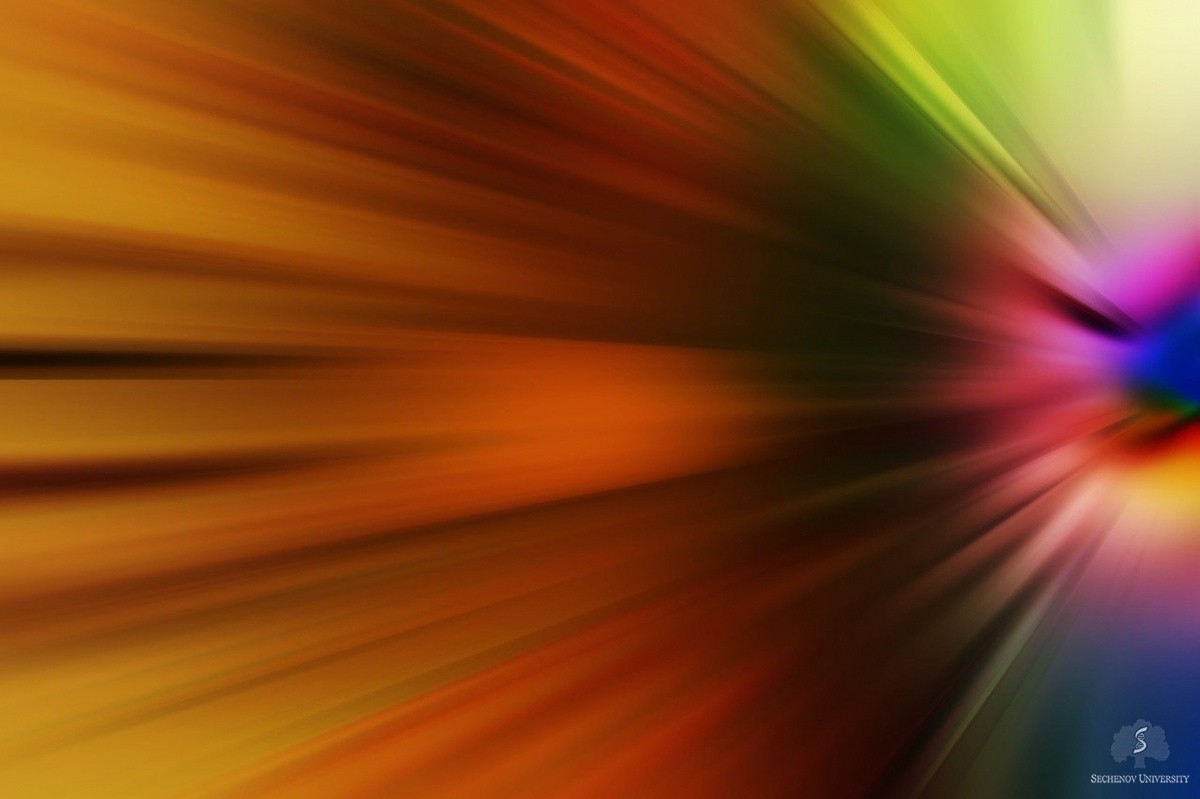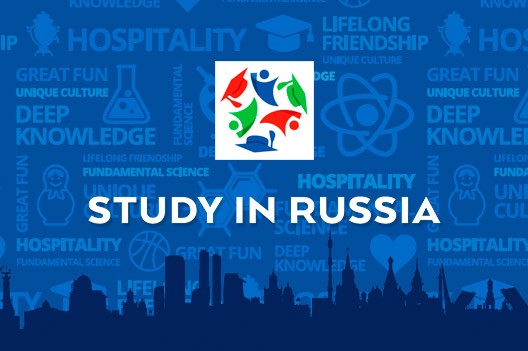-
About University
- Mission & Brand Strategy
- University Leadership
- Rector's Welcome
- History
- Regulatory Documents
- Contacts
- Staff
- International Recruitment
- Partners
Applicants- Why Sechenov University
- Degree Programmes in English
- Preparatory Courses
- Non-Degree Programmes
- Transfer from other Institutions
12.10.2020Photodynamic therapy heals infected wounds
 Bacterial infection remains a very common complication in post-operative care. It is worsened by the ever-growing resistance of the microbes to antibiotics and antiseptics. Photodynamic therapy can be used to treat sores with a bacterial infection, and new chemical compositions which can be easily applied on the wound surface improve the effect.
Bacterial infection remains a very common complication in post-operative care. It is worsened by the ever-growing resistance of the microbes to antibiotics and antiseptics. Photodynamic therapy can be used to treat sores with a bacterial infection, and new chemical compositions which can be easily applied on the wound surface improve the effect.
Wound management has been one of the most important medical procedures at all times. A lot of improvements have been made to the methods, however, quite surprisingly, wound infection remains a very common complication after surgery. A technique called photodynamic therapy (PDT) was recently shown to improve the treatment of infected wounds. Sechenov scientists and their colleagues tested a number of chemical compounds as part of PDT and observed a positive effect, suggesting that these substances may be used in clinical practice for a faster recovery of patients. The study has been published in the Journal of Photochemistry and Photobiology B: Biology.
Surgical application of PDT is associated with the overall increase in microbial resistance to antibiotics and antiseptics. The method is able to affect various bacterial strains, including multi-resistant ones. PDT is based on exposure to low-intensity light with a specific wavelength, combined with light-activated photosensitisers (PS) that produce a pharmacological effect. Convenient application of PS on wounds is based on gels which can be retained on the surface longer, and chitosan, a natural polysaccharide, is a common component of such compositions. The study authors focused on chitosan–amphiphilic polymer systems containing PS, since such combinations had not been studied as part of PDT, although they are very promising.
The scientists used photodithazine (PD), a photosensitiser, and Pluronic F127, a hydrophilic non-ionic surfactant. The substances were combined in the following manner: 1) PD water solution; 2) PD–Pluronic F127; 3) PD–Pluronic F127–chitosan. The researchers utilised animal models (rats) with wounds that were infected in controlled conditions with Gram-positive Staphylococcus aureus, Gram-negative Escherichia coli, and Pseudomonas aeruginosa. The wounds were covered with one of the substance combinations and treated with LED radiation at 650 nm or left completely untreated in the control group. The tissues were then studied histologically and microbiologically.
In all rats that underwent PDT, the overall condition normalised by day 4 when the experiment ended. No intoxication symptoms were observed, and almost all signs of local inflammation disappeared (in the animals treated with PD–Pluronic F127–chitosan and PDT), while the control animals developed a severe infection. This evidence shows that PDT is able to inhibit the development and generalisation of the local suppurative inflammation.
The best results were achieved in the case of the PD–Pluronic F127–chitosan combination. Interestingly, most rats treated with PD–Pluronic F127 had a small haemorrhage, but nothing like this was seen in the animals treated with PD–Pluronic F127–chitosan. Chitosan, as thought, reduces the negative effects of PD on the endothelium and basal membranes. The three-component composition is, therefore, the most promising one for clinical applications.
‘PDT was originally developed in the 1960s for the treatment of malignant tumours, however, today it is used mostly in palliative care’, commented Nadezhda Aksenova, Senior Research Fellow at the Institute for Regenerative Medicine (Sechenov University) and one of the authors of the study. ‘Only when PDT was suggested for the treatment of wounds, burns, and venous ulcers, this technique gained wide recognition. It provides complete healing — in particular, because bacteria do not have resistance to antibacterial PDT. In our collaborative project, we have been able to bring together the best developments in chemistry and medicine. I hope it will be possible to introduce polymer photosensitisers and their combinations with other compounds into clinical practice for the treatment of difficult wounds in people with suppressed immunity’.
The study, supported by the Russian Academic Excellence Project ‘5–100’, was carried out by Prof Solovieva, Prof Shekhter and Prof Aksenova from the Institute for Regenerative Medicine (Sechenov University), Semenov Institute of Chemical Physics of the Russian Academy of Sciences (Moscow), and the Institute of Photonic Technologies at the Federal Scientific Research Centre ‘Crystallography and Photonics’ of the Russian Academy of Sciences (Troitsk).
Read more: Solovieva AB, Rudenko TG, Shekhter AB, Glagolev NN, Spokoinyi AL, Fayzullin AL, Aksenova NA, Shpichka AI, Kardumyan VV, Timashev PS. Broad-spectrum antibacterial and pro-regenerative effects of photoactivated Photodithazine-Pluronic F127-Chitosan polymer system: In vivo study. J Photochem Photobiol B (2020).
Photo credit: Pixabay 1200800Embed on website
Photodynamic therapy heals infected wounds
Bacterial infection remains a very common complication in post-operative care. It is worsened by the ever-growing resistance of the microbes to antibiotics and antiseptics. Photodynamic therapy can be used to treat sores with a bacterial infection, and new chemical compositions which can be easily applied on the wound surface improve the effect.
Wound management has been one of the most important medical procedures at all times. A lot of improvements have been made to the methods, however, quite surprisingly, wound infection remains a very common complication after surgery. A technique called photodynamic therapy (PDT) was recently shown to improve the treatment of infected wounds. Sechenov scientists and their colleagues tested a number of chemical compounds as part of PDT and observed a positive effect, suggesting that these substances may be used in clinical practice for a faster recovery of patients. The study has been published in the Journal of Photochemistry and Photobiology B: Biology.
Surgical application of PDT is associated with the overall increase in microbial resistance to antibiotics and antiseptics. The method is able to affect various bacterial strains, including multi-resistant ones. PDT is based on exposure to low-intensity light with a specific wavelength, combined with light-activated photosensitisers (PS) that produce a pharmacological effect. Convenient application of PS on wounds is based on gels which can be retained on the surface longer, and chitosan, a natural polysaccharide, is a common component of such compositions. The study authors focused on chitosan–amphiphilic polymer systems containing PS, since such combinations had not been studied as part of PDT, although they are very promising.
The scientists used photodithazine (PD), a photosensitiser, and Pluronic F127, a hydrophilic non-ionic surfactant. The substances were combined in the following manner: 1) PD water solution; 2) PD–Pluronic F127; 3) PD–Pluronic F127–chitosan. The researchers utilised animal models (rats) with wounds that were infected in controlled conditions with Gram-positive Staphylococcus aureus, Gram-negative Escherichia coli, and Pseudomonas aeruginosa. The wounds were covered with one of the substance combinations and treated with LED radiation at 650 nm or left completely untreated in the control group. The tissues were then studied histologically and microbiologically.
In all rats that underwent PDT, the overall condition normalised by day 4 when the experiment ended. No intoxication symptoms were observed, and almost all signs of local inflammation disappeared (in the animals treated with PD–Pluronic F127–chitosan and PDT), while the control animals developed a severe infection. This evidence shows that PDT is able to inhibit the development and generalisation of the local suppurative inflammation.
The best results were achieved in the case of the PD–Pluronic F127–chitosan combination. Interestingly, most rats treated with PD–Pluronic F127 had a small haemorrhage, but nothing like this was seen in the animals treated with PD–Pluronic F127–chitosan. Chitosan, as thought, reduces the negative effects of PD on the endothelium and basal membranes. The three-component composition is, therefore, the most promising one for clinical applications.
‘PDT was originally developed in the 1960s for the treatment of malignant tumours, however, today it is used mostly in palliative care’, commented Nadezhda Aksenova, Senior Research Fellow at the Institute for Regenerative Medicine (Sechenov University) and one of the authors of the study. ‘Only when PDT was suggested for the treatment of wounds, burns, and venous ulcers, this technique gained wide recognition. It provides complete healing — in particular, because bacteria do not have resistance to antibacterial PDT. In our collaborative project, we have been able to bring together the best developments in chemistry and medicine. I hope it will be possible to introduce polymer photosensitisers and their combinations with other compounds into clinical practice for the treatment of difficult wounds in people with suppressed immunity’.
The study, supported by the Russian Academic Excellence Project ‘5–100’, was carried out by Prof Solovieva, Prof Shekhter and Prof Aksenova from the Institute for Regenerative Medicine (Sechenov University), Semenov Institute of Chemical Physics of the Russian Academy of Sciences (Moscow), and the Institute of Photonic Technologies at the Federal Scientific Research Centre ‘Crystallography and Photonics’ of the Russian Academy of Sciences (Troitsk).
Read more: Solovieva AB, Rudenko TG, Shekhter AB, Glagolev NN, Spokoinyi AL, Fayzullin AL, Aksenova NA, Shpichka AI, Kardumyan VV, Timashev PS. Broad-spectrum antibacterial and pro-regenerative effects of photoactivated Photodithazine-Pluronic F127-Chitosan polymer system: In vivo study. J Photochem Photobiol B (2020).
Photo credit: Pixabay 1200800



